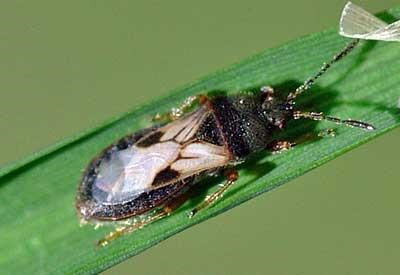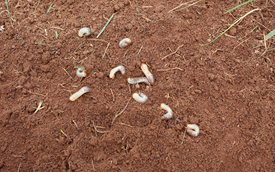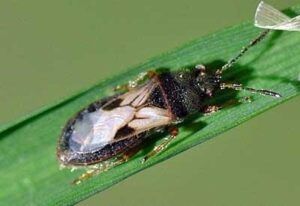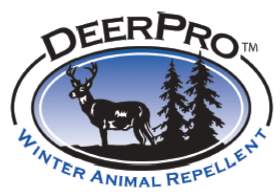Monthly Archives: September 2017
Turf Damaging Insects

There are many types of insects that can damage a lawn, but we are going to focus on a few of the most common turf damaging insects in the New Jersey.
Grubs

First of the lawn destroying insects are grubs, and they can cause substantial and costly damage in our area that requires seeding to repair.
Grubs are the sub-surface stage of beetles. There are many types of grubs found in the northeast, but as a group, the white grub is the most widespread and destructive turf insect in our area. Beetles lay their eggs in lawns. The eggs hatch and produce grubs that feed on the root system of the lawn. The most common species of beetles that people can commonly identify is the Japanese beetle. Beetles lay their eggs from June through the beginning of August.
The Identification of grubs is quite simple. They are a whitish cream color, accompanied by a brown head with chewing mandibles and three pairs of short jointed legs. They are usually found in a C-shaped posture.
The damaged caused by grubs can be quite extensive and is a result of the grubs chewing off roots close to the soil surface, severing the plant from the roots. A grass plant cannot survive without its roots. Signs of grub damage include thinning, yellowing, wilting and the appearance of scattered, irregular dead patches. The patches can increase in size and may join together to form larger areas of dead grass.
To find these turf damaging insects, go to the brown (dead areas) and pull at the grass, it comes up like a carpet. Beneath the layer of dead grass, you will be able to see grubs feeding. Secondary damage can also occur with the help of small animals, such as skunks, birds, raccoons and moles. They dig up the turf to feed on the grubs below. Below is a video that shows grubs in the lawn and how the turf pulls up like a carpet.
To avoid grubs and the damage associated with them, apply a preventative grub control in June or July. The process is quite simple; apply a grub control that waits in the soil for the grubs. This can be applied while the beetles are laying their eggs or a little bit before they start. The grub control product lasts in your lawn all summer long. For more information on grubs and grub control, here is a link to our grub control.
It is also recommend that you DO NOT put out Japanese beetle traps because this attracts more beetles that could potentially lay eggs in your lawn. If you have already purchased one or multiple of these bags, we recommend to get rid of them now. They do more harm than good because they attract more beetles than would naturally be in your yard.
Chinch Bugs
The next turf damaging insect popular to the area are chinch bugs. They can cause widespread and costly damage in home lawns. Chinch bugs reside in the thatch layer of the lawn during the winter months, this is also referred to as overwintering. Similar to grubs and other turf insects, their damage can be permanent and require seeding to repair.
 Chinch bugs typically have two generations per year and while looking you normally can spot the different stages of their life cycle. Chinch bugs start off in the egg stage, then they hatch into the nymph stage. The first nymphs are about 1mm and are bright red with a white band across their middle. The red changes to orange, then to an orange brown and finally black as the nymph’s progress. The last stage is the adult stage and adults are black with shiny white wings. There is a distinctive black spot near the margin of each forewing, and a black line extending diagonally toward the head. It looks as though there is a white X on their back.
Chinch bugs typically have two generations per year and while looking you normally can spot the different stages of their life cycle. Chinch bugs start off in the egg stage, then they hatch into the nymph stage. The first nymphs are about 1mm and are bright red with a white band across their middle. The red changes to orange, then to an orange brown and finally black as the nymph’s progress. The last stage is the adult stage and adults are black with shiny white wings. There is a distinctive black spot near the margin of each forewing, and a black line extending diagonally toward the head. It looks as though there is a white X on their back.
Chinch bugs feed by inserting their needle-like mouthparts into the crowns and stems of grasses and suck out the plant’s juices. At the same time, chinch bugs inject a toxic saliva into the plants which disrupts the flow of moisture, causing the plant to wilt and die.
Chinch bug damage can be quite extensive and costly to fix. Signs of chinch bug damage include gradual thinning, yellowing, wilting and the appearance of scattered, irregular dead patches. A chinch bug starts in one area and gradually grows outward, these patches can increase in size and may join together to form larger areas of dead grass. The dead grass does not pull up easily and the damage often times is confused with drought stress, disease or any number of other problems.
A surface insect control should be applied to stop further damage of the insect. Come the end of August, you can repair the damaged areas with seeding. Core aeration or dethatching should also be done annually to the lawn to reduce the thatch layer where the chinch bugs harbor over the winter.
Sod Webworm
The next turf damaging insect is the sod webworm, which are the larva of a moth. They overwinters down in the soil inside their silken tunnels. In the early spring they start to feed again, then in late May to early June they pupate in a cocoon emerging into adulthood as a moth.
The adult moths color pattern varies with each species and their size ranges from 1/2- to 3/4-inch long while sometimes having a small, dark line on the top of each wing cover. Two small, fingerlike projections are visible at the front of the head and look like a snout. When the moth is at rest, the wings wrap around its body, giving it a tube like shape. On warm evenings you can see the moths flying low over the lawn in a zigzag pattern. Adult females drop their eggs on to the ground while flying. These eggs then take 7 – 10 days to hatch.
Like the adult moths, the color pattern for the larva sod webworm varies with each species as well. Most sod webworms are greenish, grayish, or brownish, and usually have dark spots scattered along their bodies. The head capsule of the larger stages of sod webworm are light brown with dark markings.

Sod webworm feeding occurs mostly at night, during this time the sod webworm emerges from its silken tunnel and chew off the leaves and stems just above the crown of the grass plant. The damage starts out looking like small yellow or brown patches gradually increasing in size. Since they are night feeders you do not see these turf insects during the day; however, upon inspection of the turf you normally are able to see their silken tunnels in the soil and a green pellet-like matter called “frass,” which is sod webworm excrement.
Control for sod webworm is easy. An insecticide should be applied and watered in to wash the insect control off of the grass blade and down into the soil where the sod webworms are located. Damage from sod webworms could be permanent and should be evaluated for seeding in late August or September.
Conclusion
If you have had an issue with insects in the past, or think you may have turf damaging insects now and are located within our service area, please feel free to contact Fairway Green Inc. with any questions or for a free evaluation and estimate for an insect control. You can call us at 908-281-7888 or request an estimate on our website.




